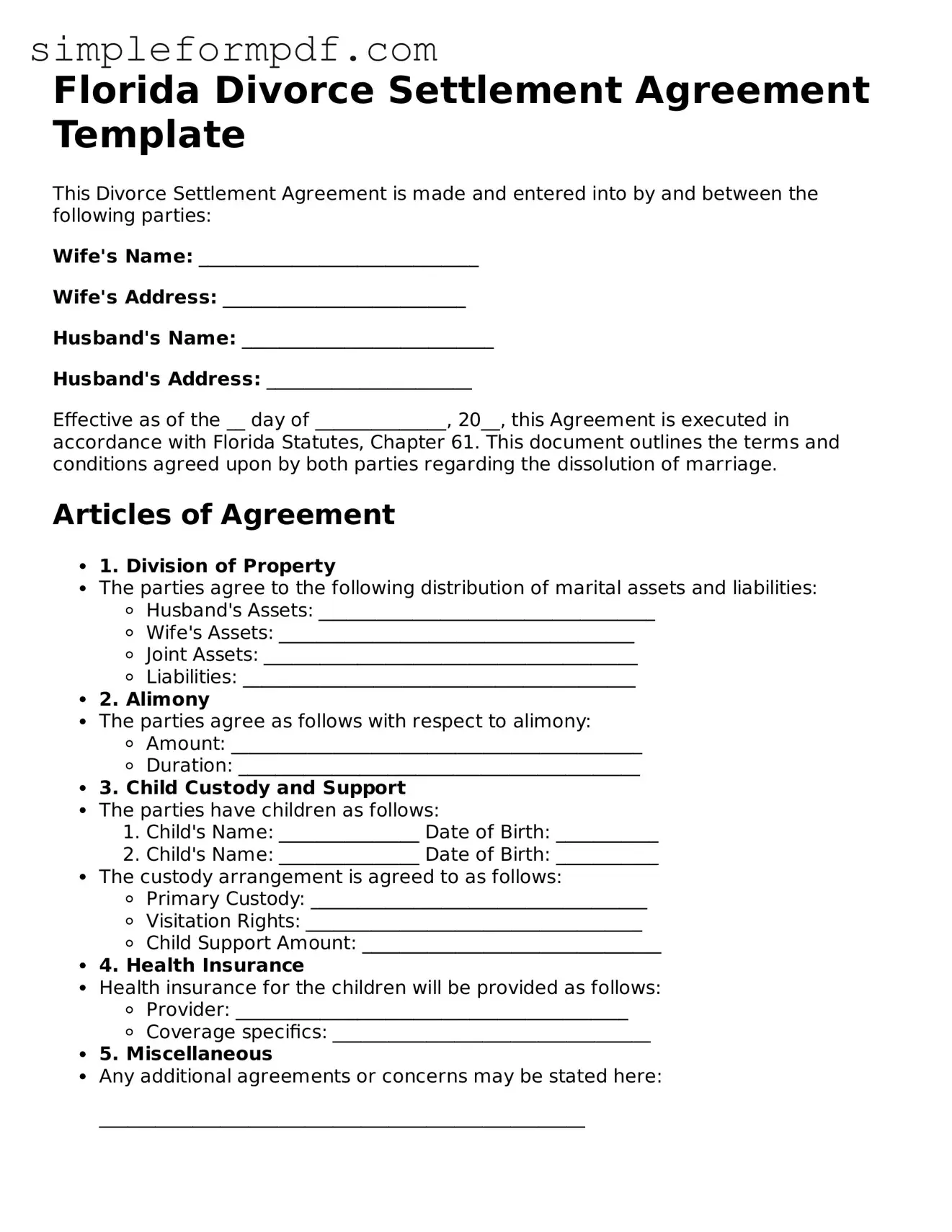Free Divorce Settlement Agreement Form for the State of Florida
The Florida Divorce Settlement Agreement form is a legal document that outlines the terms and conditions agreed upon by both parties during a divorce. This form serves to clarify issues such as property division, child custody, and support obligations, ensuring that both individuals understand their rights and responsibilities. Completing this form is a crucial step in finalizing a divorce, so be sure to fill it out by clicking the button below.
Launch Editor
